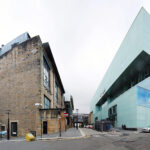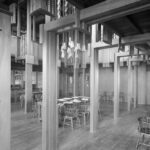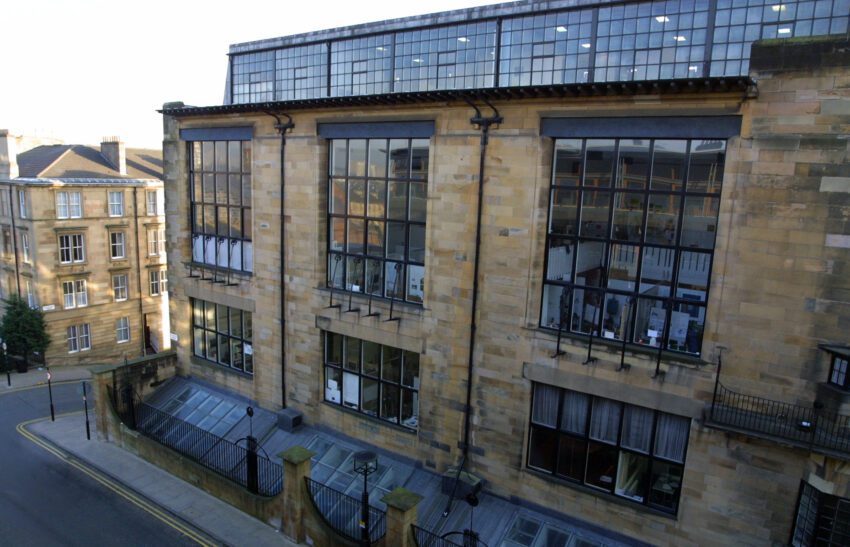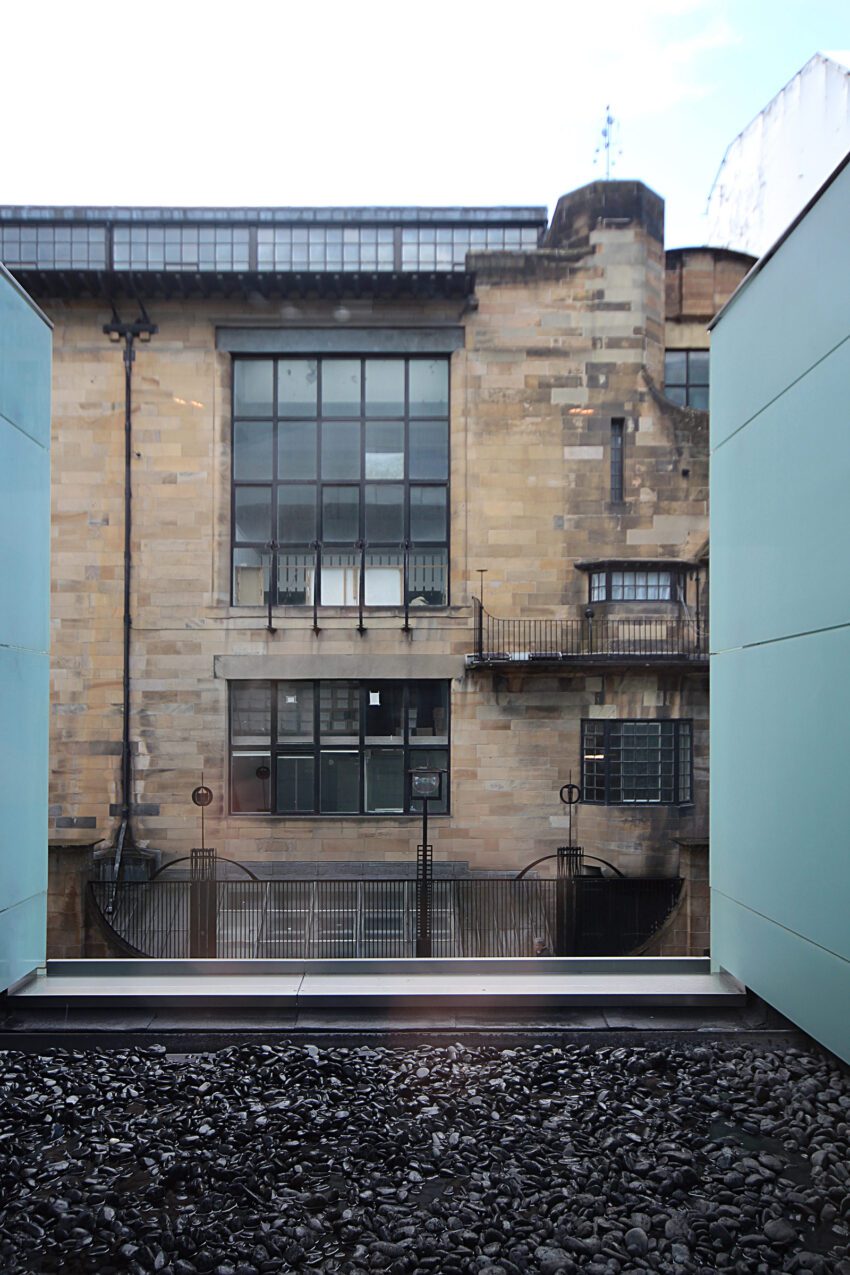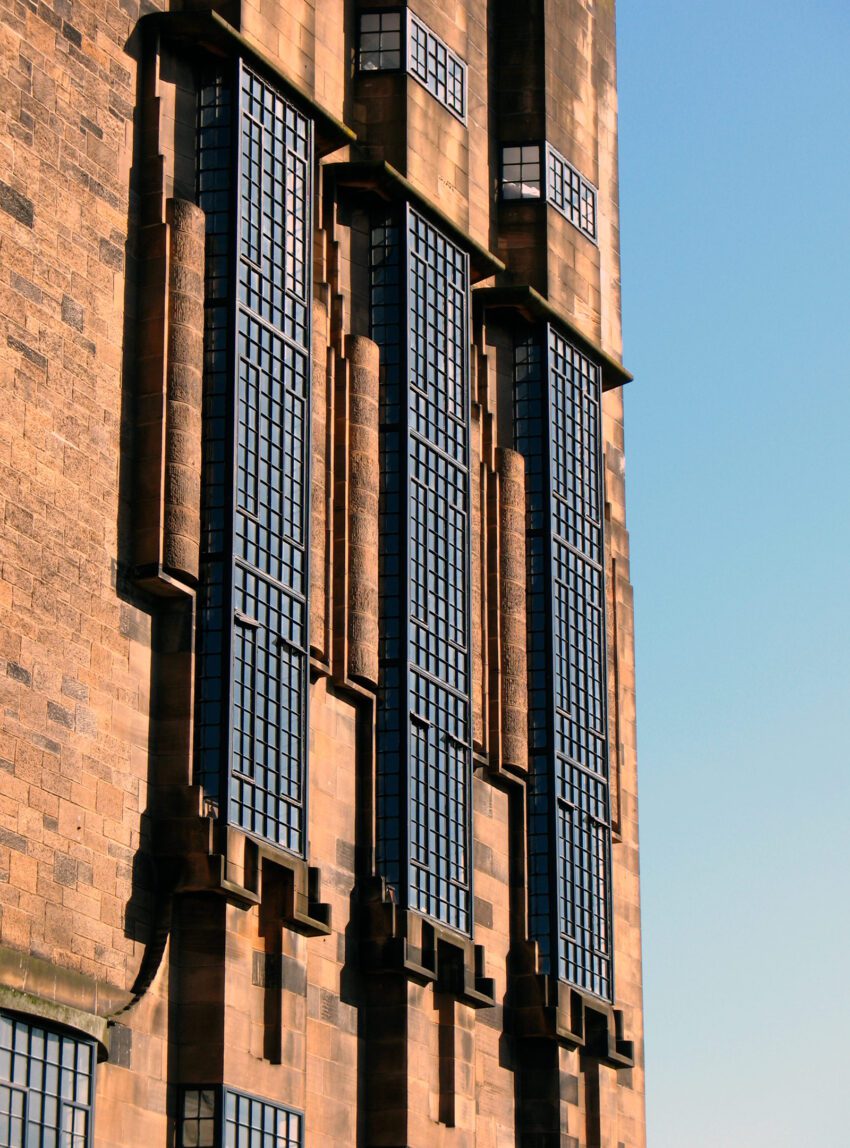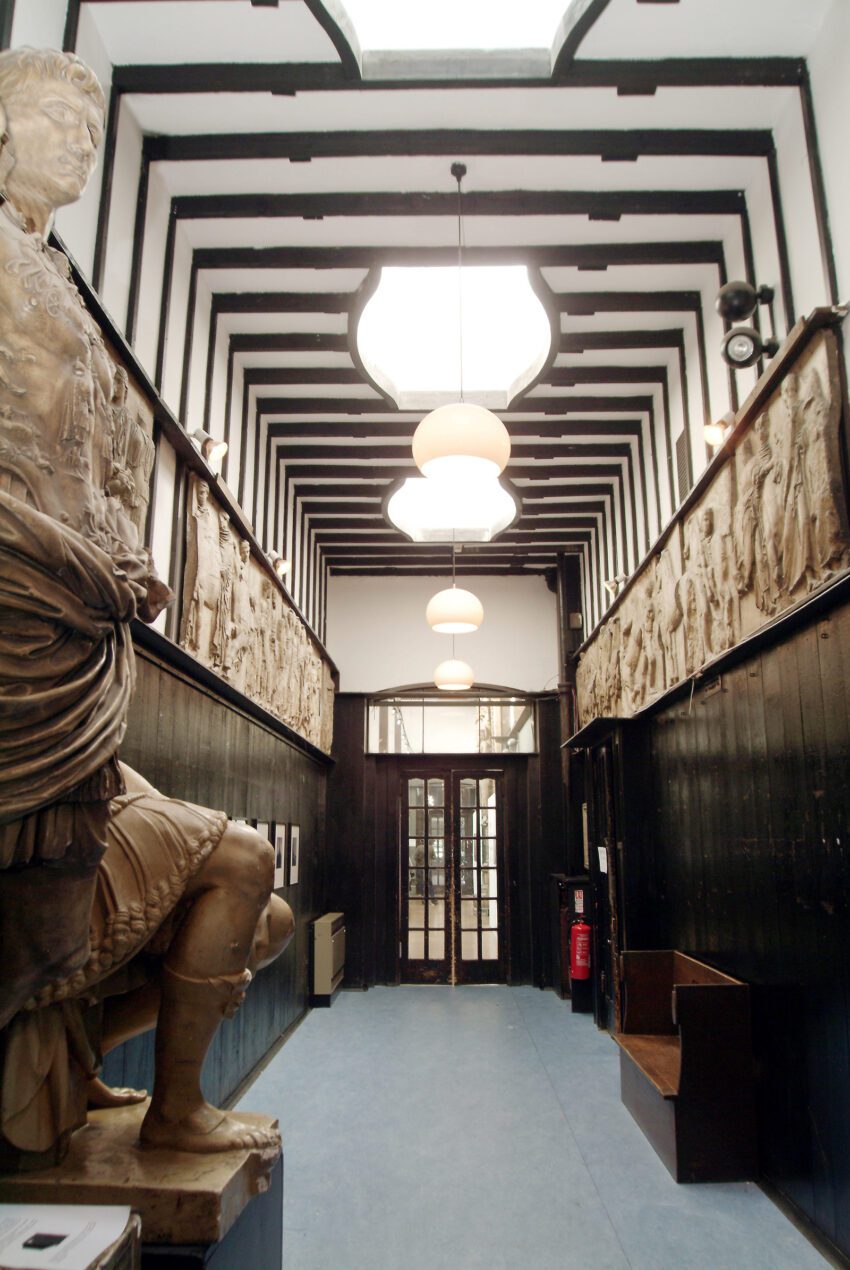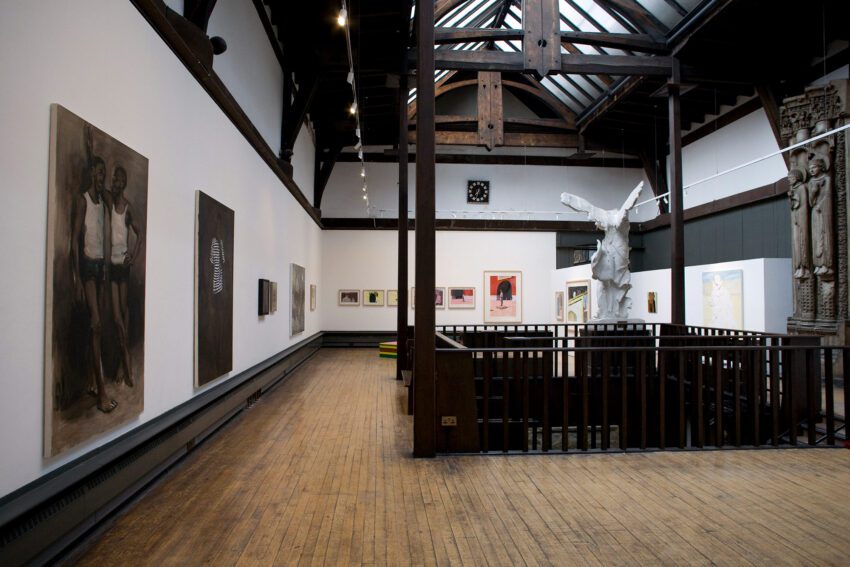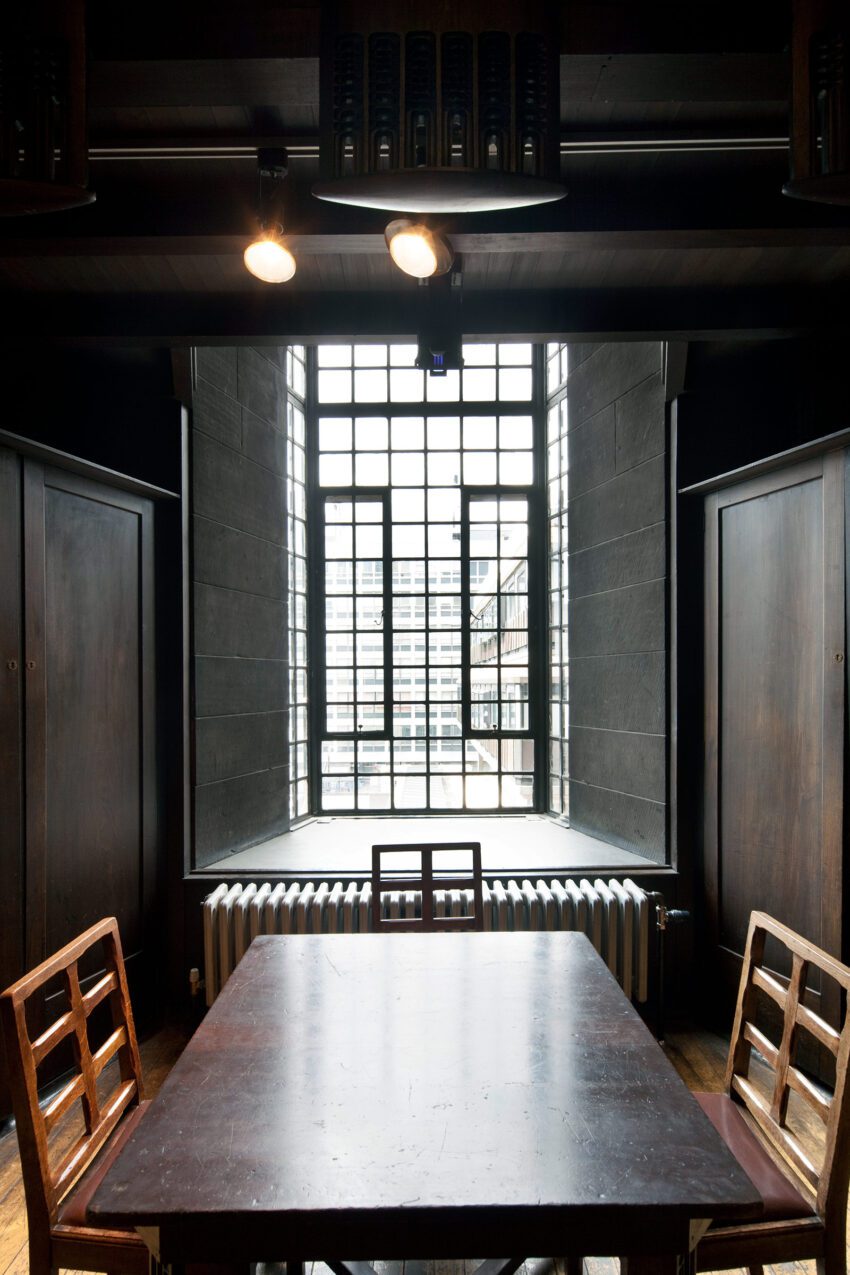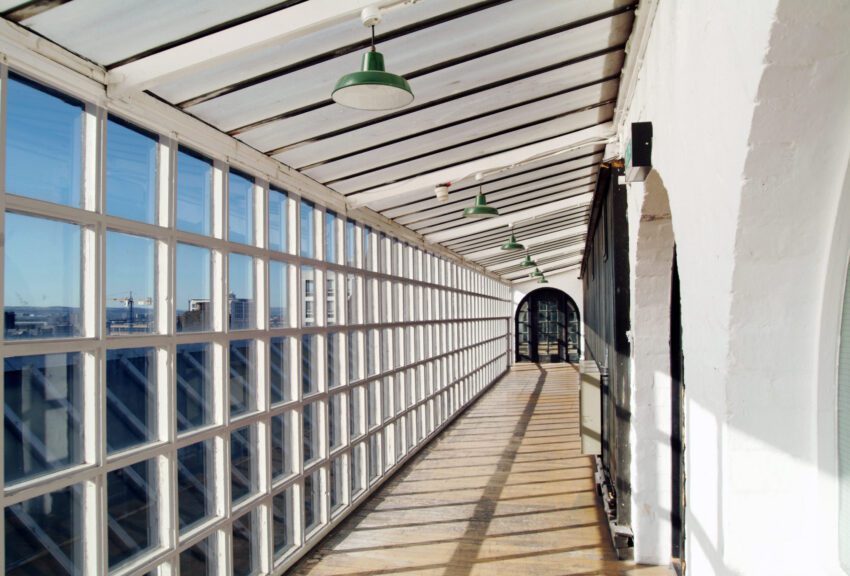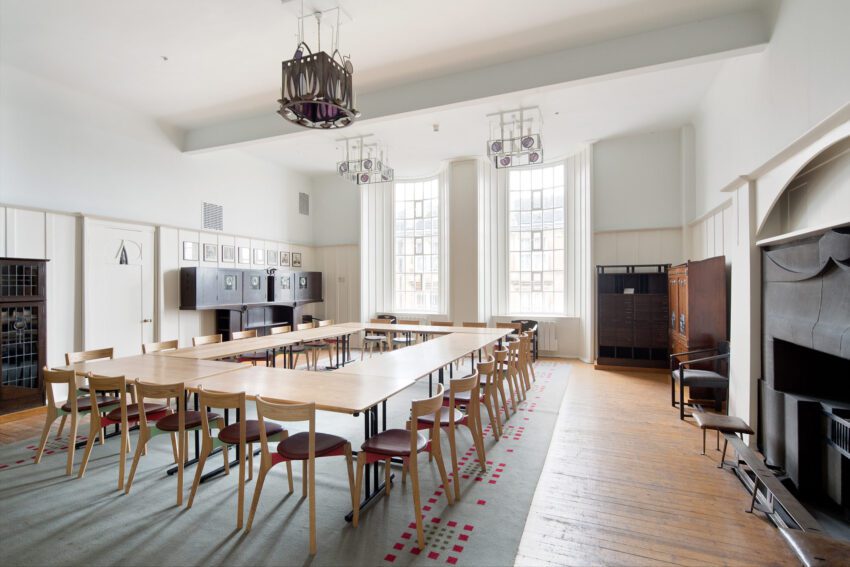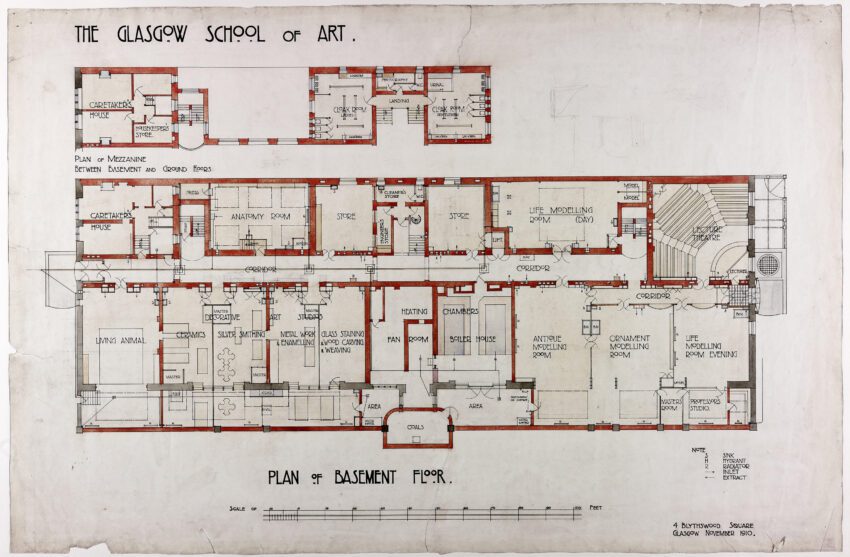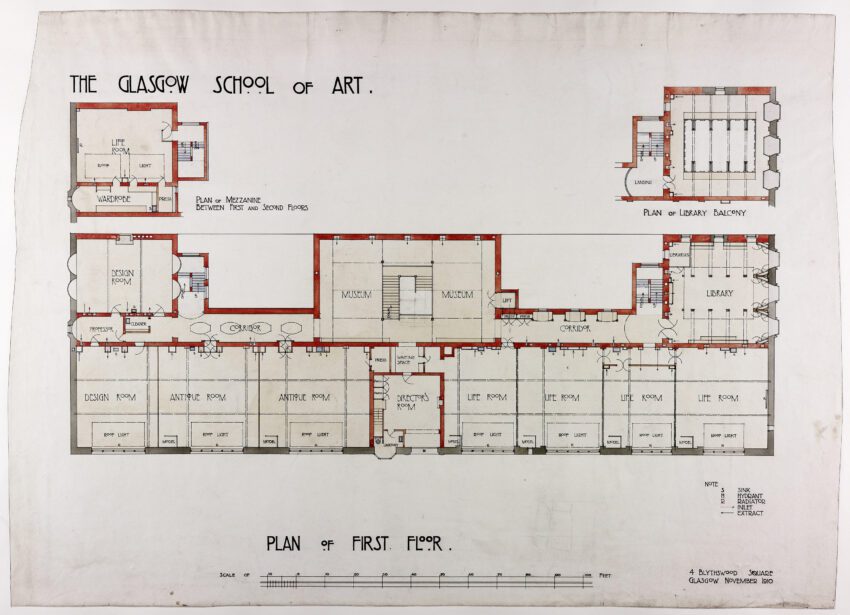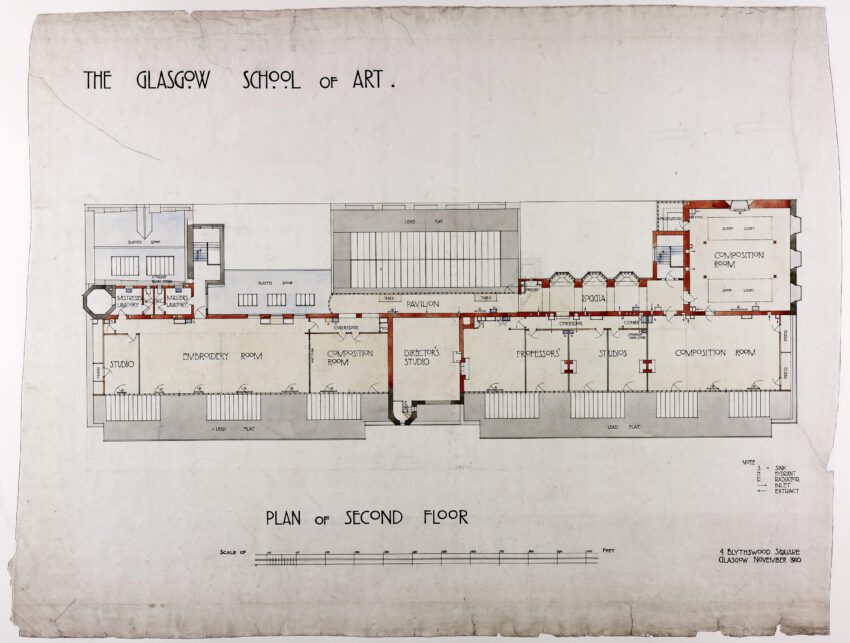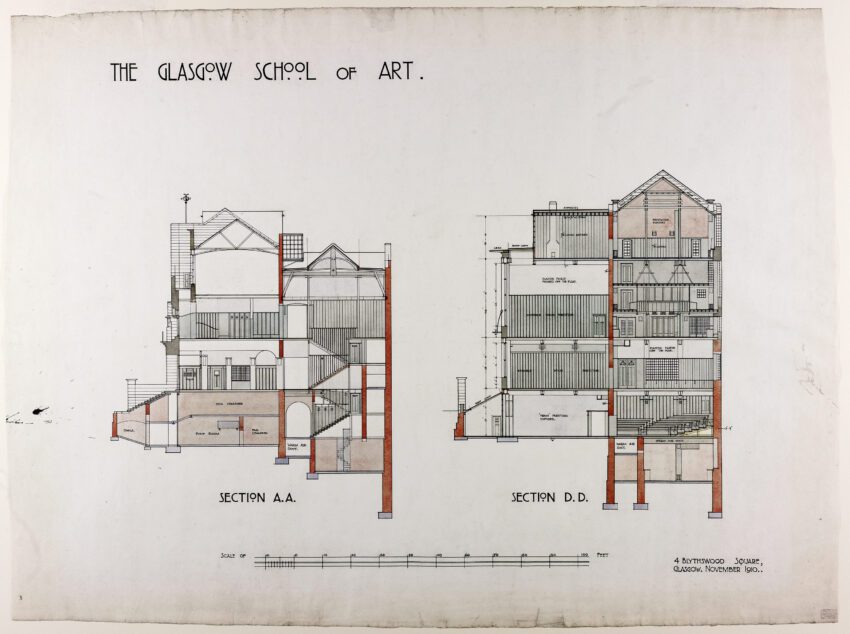Established in 1845, the Glasgow School of Art swiftly became a prominent center for design-based education in Britain. By the late 19th century, its growing reputation and expanding student body rendered its original Sauchiehall Street location inadequate. This led to the need for a larger, purpose-built facility. Under the dynamic and forward-thinking leadership of Headmaster Francis H. Newbery, plans for a new building started to materialize, setting the stage for a significant development in the institution’s history.
The Glasgow School of Art Technical Information
- Architects: Charles Rennie Mackintosh
- Location: 167 Renfrew Street, Glasgow, Scotland
- Topics: Art Nouveau, Arts and Crafts, Modernism
- Project Year: 1897 – 1909
- Photographs: © GSA (Glasgow School od Art Flick), © Trevor Patt
There is hope in honest error; none in the icy perfections of the mere stylist.
– Charles Rennie Mackintosh 1-2
The Glasgow School of Art Photographs
The Evolution of the Glasgow School of Art
The selection of a design for the new building was entrusted to a competition, a common practice at the time. Despite budget constraints and challenging site conditions, the competition attracted numerous entries from prominent Glasgow architectural firms.
John Honeyman & Keppie’s design, which is widely attributed to Charles Rennie Mackintosh, emerged victorious. The initial phase of construction, focused on the east wing and entrance block, commenced in 1897, while the west wing was added between 1907 and 1909. Mackintosh, an assistant at Honeyman & Keppie, played a pivotal role in the design, which bore his unmistakable signature style.
Mackintosh’s design for the Glasgow School of Art is celebrated for its innovative approach to architectural form and function. The building’s plan, a shallow ‘E’, maximizes natural light in the north-facing studios. The exterior, with its deep eaves and unique window designs, reflects Mackintosh’s preference for simplicity and functionality over ornate decoration.
The distinctive east elevation contrasts sharply with the plain, utilitarian north front. Its oriel windows and turret add a dynamic quality to the facade. The roughcast south front, altered during the second phase of construction, presents a stark, fortress-like appearance.
The Glasgow School of Art showcases a blend of historical influences, including Scottish fortified tower houses and elements from Mackintosh’s travels in England. However, it stands out for its departure from historical styles, embracing instead the principles of the Arts and Crafts movement and the Free Style.
The interior of the Glasgow School of Art is marked by functional simplicity and thoughtful design. Key spaces include the library, the museum, and various studios, all characterized by ample natural light and practical layouts. The use of materials like steel and timber in innovative ways is a testament to Mackintosh’s creative genius.
Upon its completion, the Glasgow School of Art was recognized for its modernist approach, eschewing traditional ornamentation in favor of a design that truly served its purpose. Mackintosh’s work at the school has been lauded for its groundbreaking approach to architectural design, blending form and function in a manner that was ahead of its time.
The building’s critical reception was mixed, with some praising its innovative design while others found it too unconventional. Nonetheless, its architectural significance has been acknowledged since the 1930s, marking it as a key work in the development of modern architecture.
The Glasgow School of Art stands as a monument to Charles Rennie Mackintosh’s architectural vision. Its unique design, blending historical references with a modernist ethos, has cemented its place as a masterpiece of early 20th-century architecture and a pivotal contribution to the architectural heritage of Glasgow and beyond.
The Glasgow School of Art Plans
The Glasgow School of Art Image Gallery






